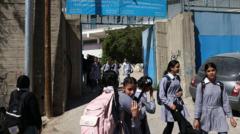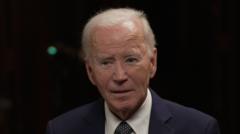In the context of a significant blockade on Gaza, U.S. and Israeli officials, led by the Trump administration, are deliberating on a food distribution plan that aims to alleviate humanitarian concerns. However, this proposal raises questions about effectiveness, with the U.N. describing it as unworkable.
U.S. and Israel Propose New Food Aid Plan for Gaza Amid Ongoing Blockade

U.S. and Israel Propose New Food Aid Plan for Gaza Amid Ongoing Blockade
As Israel continues a two-month blockade on Gaza, U.S. officials and the Trump administration contemplate a new food distribution strategy, facing skepticism from aid workers and the U.N.
Amid an ongoing blockade that has halted aid to Gaza for two months, U.S. officials and the Trump administration are actively discussing a new food distribution strategy in collaboration with Israel. The enthusiasm surrounding the plan is countered by skepticism from international aid workers and the United Nations, which views the approach as impractical.
Sources indicate that the proposal involves establishing several distribution zones in Gaza to provide food to hundreds of thousands of residents. Under this plan, the Israeli military would remain at a distance from these zones, enabling aid workers to operate independently and without direct military presence.
This marks a significant engagement from the Trump administration in developing a detailed humanitarian aid mechanism for Gaza, with Mr. Trump poised to announce the initiative in conjunction with an upcoming visit to the Middle East. The crucial goal of this proposal is to ensure that humanitarian supplies do not fall into the hands of Hamas, which Israel and the U.S. claim would undermine Hamas's influence and potentially destabilize their control over the local population.
Despite the intended objective of the plan, various aid organizations have expressed serious concerns about its feasibility and effectiveness, indicating that any solution must prioritize the real needs of the Palestinian people in Gaza. The ongoing debates and divergent opinions underscore the complexity of delivering humanitarian assistance in a region marked by conflict and political divisions.
Sources indicate that the proposal involves establishing several distribution zones in Gaza to provide food to hundreds of thousands of residents. Under this plan, the Israeli military would remain at a distance from these zones, enabling aid workers to operate independently and without direct military presence.
This marks a significant engagement from the Trump administration in developing a detailed humanitarian aid mechanism for Gaza, with Mr. Trump poised to announce the initiative in conjunction with an upcoming visit to the Middle East. The crucial goal of this proposal is to ensure that humanitarian supplies do not fall into the hands of Hamas, which Israel and the U.S. claim would undermine Hamas's influence and potentially destabilize their control over the local population.
Despite the intended objective of the plan, various aid organizations have expressed serious concerns about its feasibility and effectiveness, indicating that any solution must prioritize the real needs of the Palestinian people in Gaza. The ongoing debates and divergent opinions underscore the complexity of delivering humanitarian assistance in a region marked by conflict and political divisions.





















